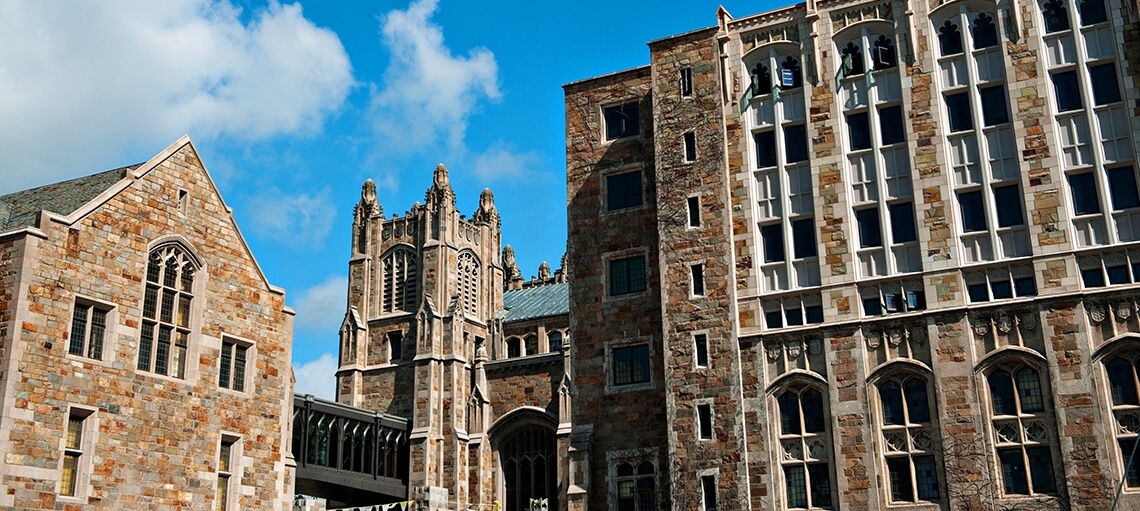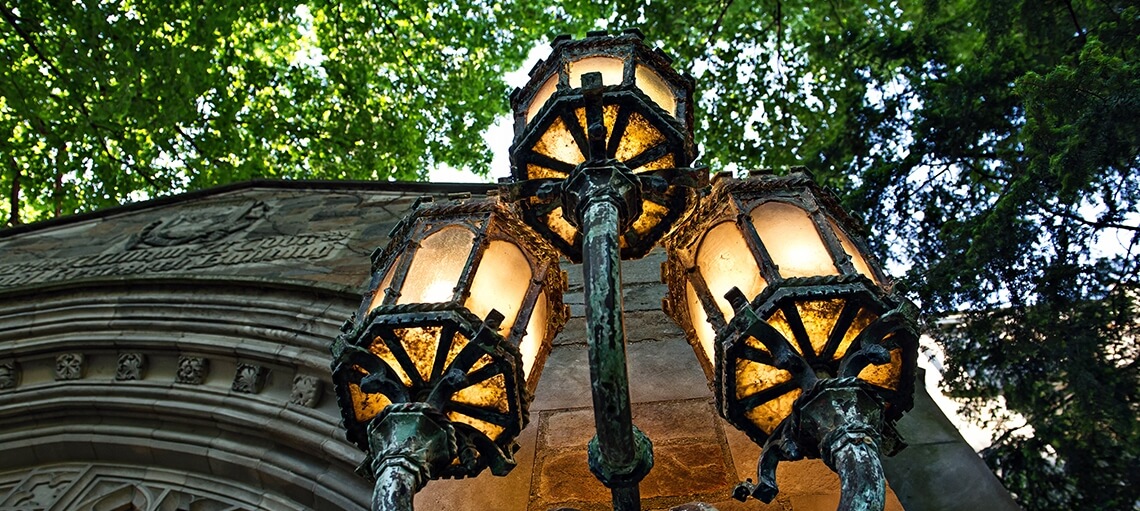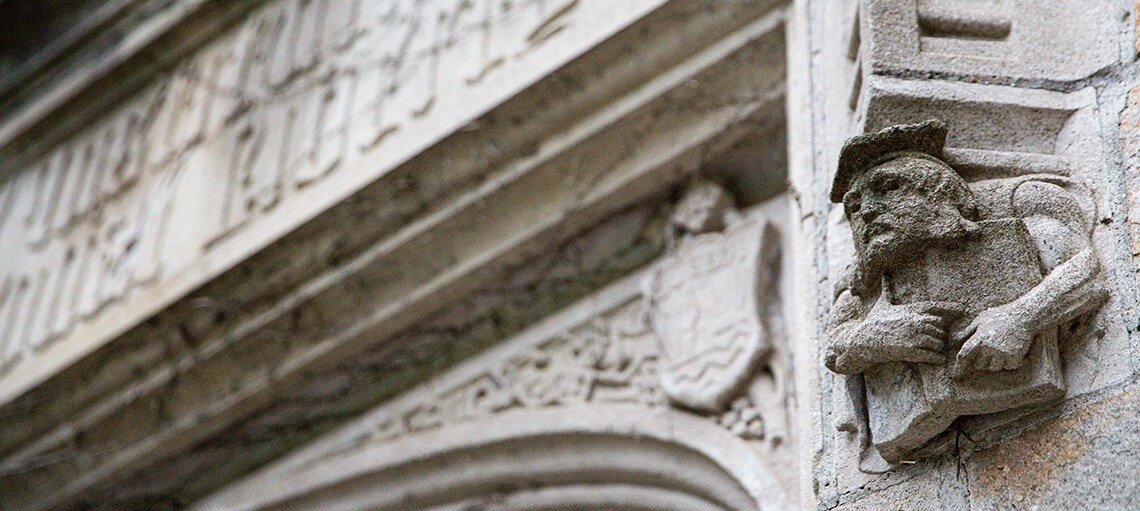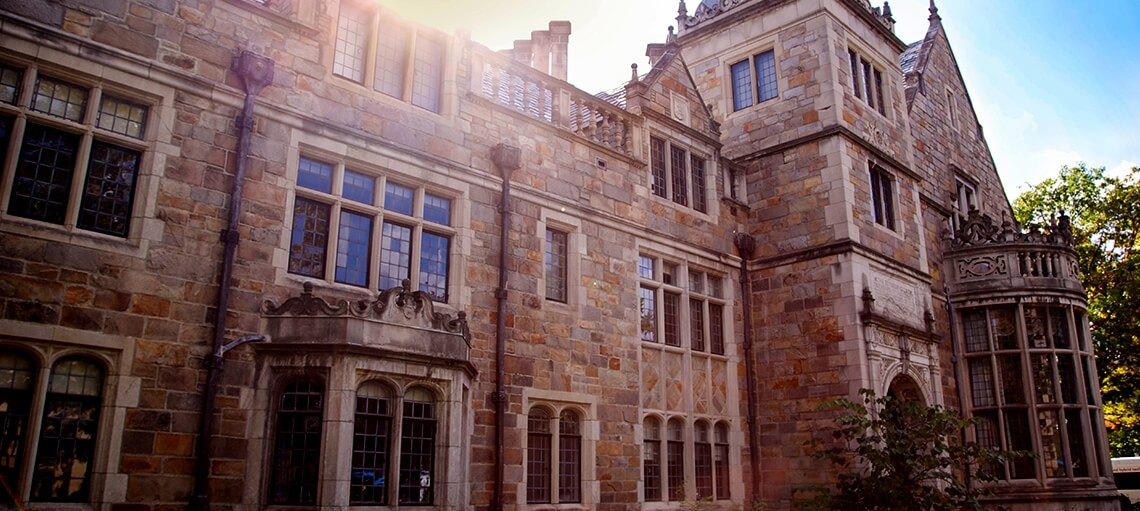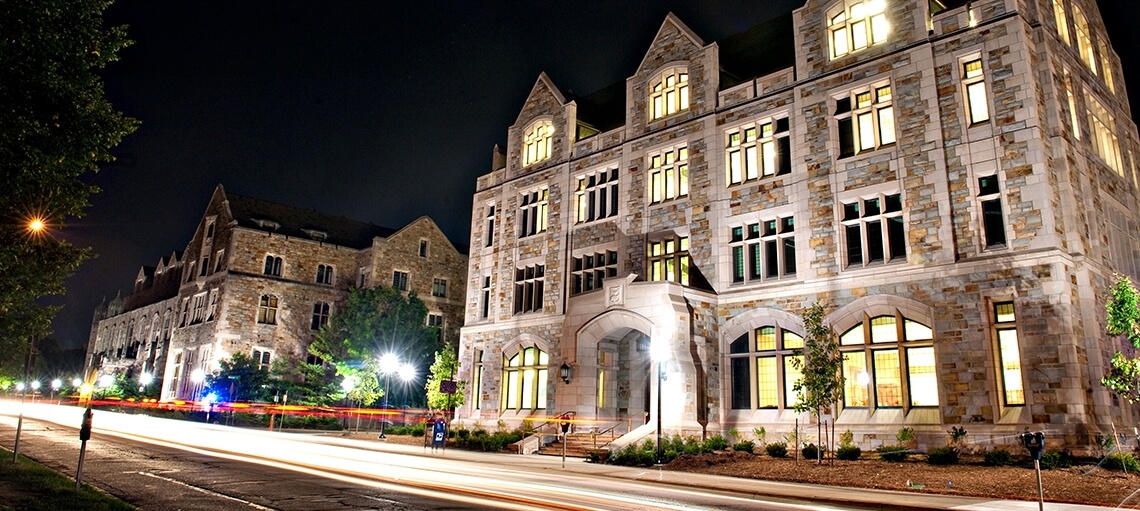The Timeless Law Quadrangle
The striking Gothic-style buildings that form the William W. Cook Law Quadrangle include the Lawyers Club with residential facilities for 227 students; the Legal Research building, which contains the magnificent Reading Room and faculty offices; a modern underground library addition, the Allan F. and Alene Smith Library, regarded as an architectural tour de force and one of the world’s best law libraries; and Hutchins Hall, with classrooms, seminar rooms, and faculty and administrative offices.
Expanding the Legacy
The Law School’s existing facilities were further enlarged in 2012 by both a new four-story academic building, Jeffries Hall, constructed in modified collegiate Gothic style, as well as a gorgeous glass-roofed gathering place for the Law School community, the Aikens Commons. The result, physically as well as metaphorically, enhances our true living and learning community.
Jeffries Hall, named in 2018 in honor of Lisa and Chris Jeffries, ’74, is Gold LEED certified, and was built by specialized masons using antiquated techniques and stone from the same quarry as the original Law Quad.
Over time, the building will age and look even more similar to Hutchins Hall. It houses classrooms, faculty offices, administrative offices, and work spaces for many of our clinics.
The Law School’s beauty and functionality is a factor both in student satisfaction and in our programmatic success. The location of residential and academic buildings within the Quad fosters the integration of activities for both students and faculty.
In addition, the excellence of Michigan’s library, the concentration of scholars, and the serenity of the setting attract numerous visitors within the profession. Those visiting lawyers, judges, and law faculty enhance the experience of living and studying in the Quad.
One result of this architectural design—sensed immediately even by entering students—is an ethos of collegiality and accessibility regardless of the age, reputation, or career achievement of those who walk its paths and corridors.
It is therefore hardly surprising that interactions at the neighboring coffee shops, restaurants, bistros, and bars are frequent between faculty and students, as well as among students.







